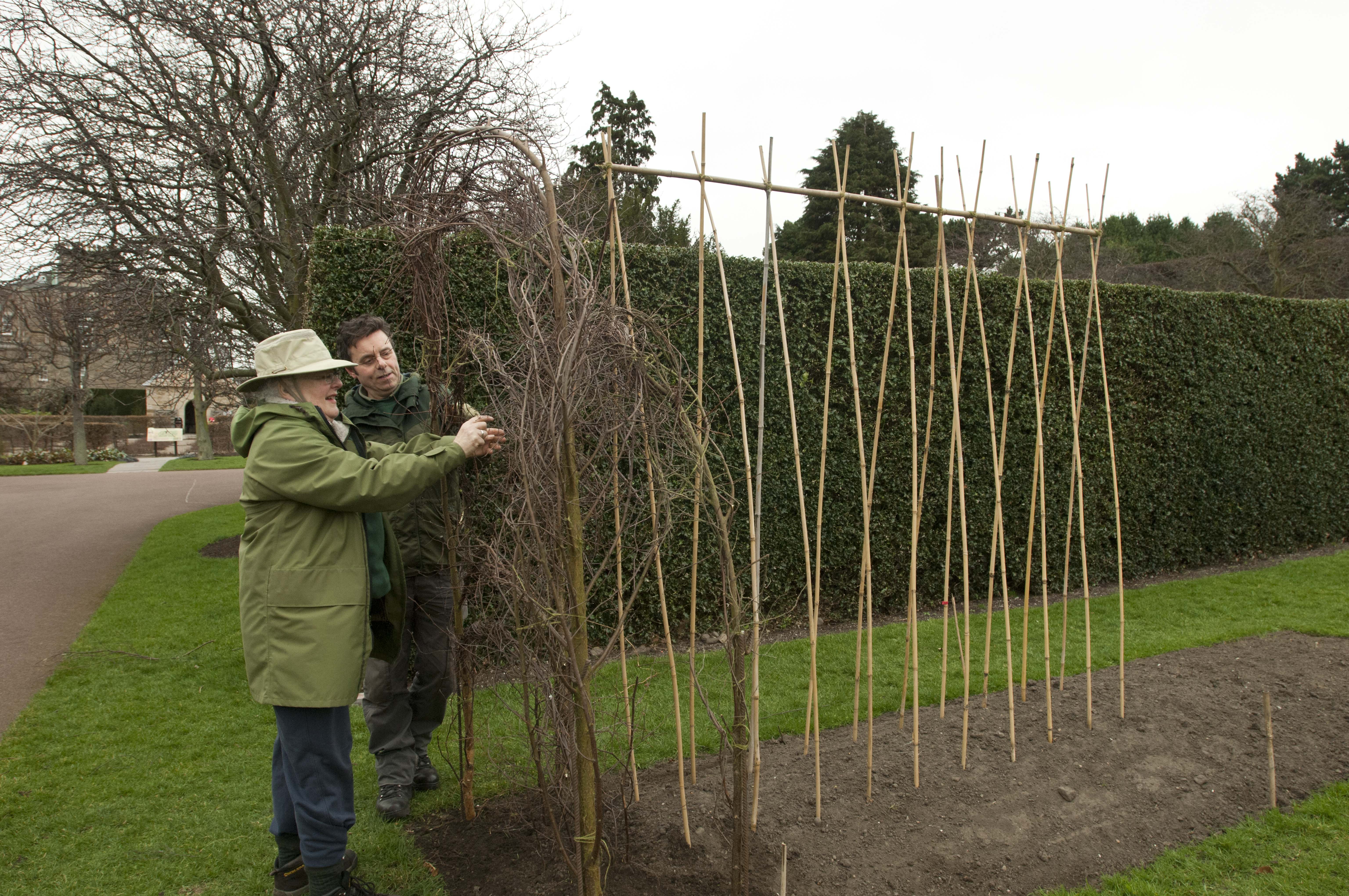Soil:
- Finish preparing the soil for sowing seeds. The aim is to create a fine tilth– a nice crumbly structure that is ideal for germinating seeds.
- Soil can be warmed by covering it with cloches or black plastic a few weeks before sowing.
Plant supports:
- Erect bean poles and pea sticks before planting the seeds or young plants. Be creative – the volunteers pictured are weaving birch to make an archway for sweet peas to climb up.
Sow:
- Sow a range of crops directly outdoors, on a windowsill, in a propagator, or undercover (cloche or greenhouse) – see below for more details.
- Thin out seedlings to their required spacing.
- During the seedling stage vegetables are susceptible to being out swamped by weeds. Hoe and hand weed carefully around young plants.
- When the vegetables are large enough, mulch them with a layer of well-rotted compost. This discourages weeds and helps to prevent water loss.
- If unseasonal frosts threaten towards the end of spring cover tender growth such as early potato shoots with fleece or other forms of protection.
Sow outside; beetroot, broad beans, early peas (best started in a gutter in the greenhouse then slipped into a trench), brussel sprouts, kohl rabi, leeks, lettuce, radish, parsnips, spinach beet, early turnips
Sow undercover (cloche or greenhouse); summer cabbages, early cauliflowers, early carrots
Sow in heat (windowsill or propagator); tomatoes, peppers, aubergines and cucumbers
Things to consider:
- Delay sowing if the weather is bad.
- Plants can be started off early on the windowsill, in the cold frame, greenhouse, polytunnel or under cloches.
- Gradually harden off (acclimatise) plants that are being moved from inside to out.

